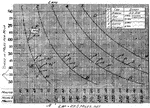
Black-throated Murrelet
"Synthliborhamphus antiquus. Nipper-nosed Murrelet. Bill somewhat as in Brachyrhamphus, but stouter…

Japanese Murrelet Bill
"Synthliborhamphus umizusume. Japanese Murrelet. Temminck's Auk. Bill more elongate and acute than in…

Black Guillemot Bill
"Uria grylle. Black Guillemots. Bill much shorter than head, about equal to tarsus, straight, rather…

Pigeon Guillemot Bill
"Uria columba. Pigeon Guillemot. Bill stouter than that of grylle, and more obtuse." Elliot Coues, 1884

Sooty Guillemot Bill
"Bill larger than Pigeon Guillemot, 1.5-1.70 along culmen, along gape 2.20, from feathers on side of…

Common Guillemot Bill
"Bill black; bill along culmen 1.75; gape 2.50; gonys 1.15; depth at base .55; width .30." Elliot Coues,…

Californian Guillemot Bill
"Bill averaging somewhat longer, about 1.90; culmen, commissure, and gonys nearly straight; upper mandible…

Thick-billed Guillemot Bill
"Lomvia arra. Thick-billed Guillemot. Arrie. Bill short, stout, wide, deep; culmen curved throughout;…
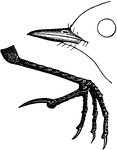
American Titlark Claw
"Anthus Ludovicianus. Louisiana Pipit. American Titlark. Brown Lark. Wagtail. Bill blackish, pale at…

Oriole Bill
"Icterus. Orioles. Bill averaging as long as head (more or less); very acute, sometimes decurved." Elliot…
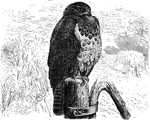
European Hawk
"Buteo vulgaris. hawk of Europe, Upper parts dark brown, very variable in shade according to season…

Carolina Dove
"Zenaidura carolinensis. Carolina Dove. Mourning Dove. Wild Dove. Upper parts, including middle tail-feathers,…

Pelican Bill
"North American White Pelican. Bill and feet ordinarily yellow; much reddened in the breeding season,…

Check Book
A check is a negotiable instrument instructing a financial institution to pay a specific amount of a…
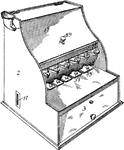
Coin Assorter
This tool is used for sorting coins, A coin is a piece of hard material that is standardized in weight,…

A Page
"But who are the little boys with the silver badges about the size of a half-dollar on their coats,…

Geranium Anemonaefolium
The common name of geranium is crane's bill. The flowers of geranium anemonaefolium are large and purplish…
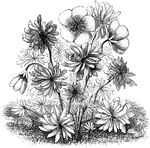
Geranium Argenteum
The flowers of geranium argenteum are pale red with darker stripes. The leaves are hoary or silky and…

Flowering Branch of Geranium Ibericum Platypetalum
The flowers of geranium ibericum platypetalum are deep violet with reddish streaks. The flowers are…

Geranium Wallichianum
The flowers of geranium wallichianum are large and purple. The leaves are five parted and have silky…

Pelargonium Endlicherianum
The common name of pelargonium is stork's bill. The endlicherianum variety has large, deep rose colored…

Flowering Branch of Pelargonium Inquinans
Pelargonium inquinans flowers vary from intense scarlet, to rose colored, to white. The flowers bloom…
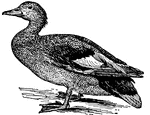
Gadwall Duck
The Gadwall (Chaulelasmus streperus) is a widely distributed duck, appearing throughout Europe and N.…

Bill of Gadwall
The bill of the Gadwall Duck, showing the comb-like 'teeth' that they are known for.
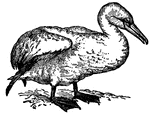
Gannet
Also known as a Solan Goose (Sula bassana), the Gannet is a large marine bird which nests in scattered…
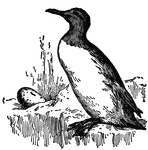
Common Guillemot
The Common Guillemot (Uria troile) is a member of the auk family. It breeds on all rocky coasts of the…
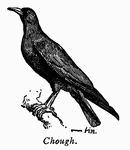
Chough
Chough, a European crow with a glossy black color, with bill, legs and feet a bright cherry red.
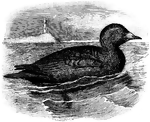
A Black Scoter Swimming
Melanitta americana or Œdemia nigra A large sea-duck of the genus CEdemia, belonging to the subfamily…

Sirgang
"The so-called green jackdaw of Asia, Cissa sinensis. The sirgang inhabits the southeastern Himalayan…
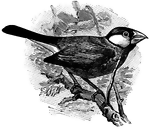
Java Sparrow on a Branch
Padda oryzivora. "...the rice bird of Java...about as large as the bobolink, of a bluish-gray color…
White Marlin, a Sailfish
Tetrapturus albidus. Also called a billfish or spearfish, "the dorsal fin is low or moderately developed,…
